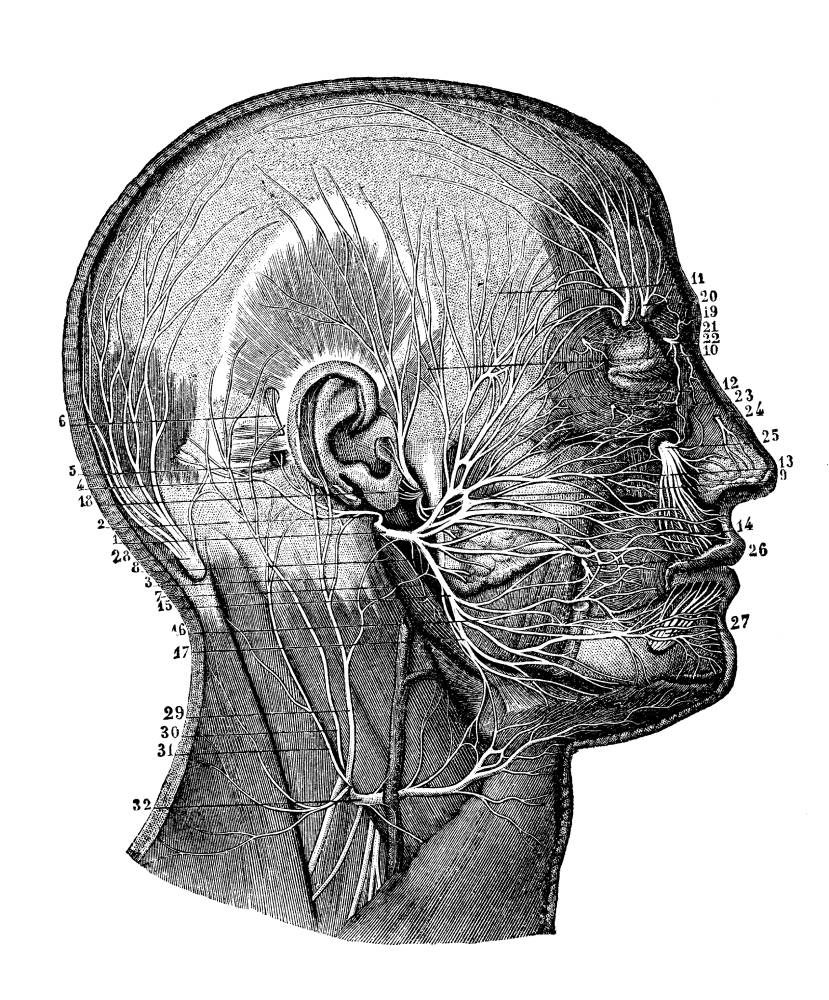Uses for Facial Nerve Blocks

Facial nerve blocks are a type of regional anesthesia that can be used to manage and alleviate pain in the face, head, and neck area. Nerve blocks work by injecting medication around a particular nerve, “bathing” and numbing the nerve without directly disturbing it (6). These medications temporarily block the nerve signals that transmit pain sensations from the facial area to the brain. The uses of facial nerve blocks include alleviating pain caused by medical conditions and preventing or reducing pain from surgery.
Nerve blocks serve both diagnostic and therapeutic purposes; when anesthesiologists target a particular nerve using a nerve block, the clinical outcome of the procedure can help determine whether the pain is caused by the nervous system and whether the pain originates from a specific source (7). The therapeutic uses of facial nerve blocks also include preventing patients from feeling pain during dental and dermatological procedures and managing various kinds of acute and chronic pain.
For example, facial nerve blocks are administered to treat headache disorders, including migraines. When treating headaches, physicians often target the greater occipital nerve or GON, a sensory nerve that originates from the medial branch of the dorsal ramus of the C2 spinal nerve (4). Targeting this nerve with a nerve block can help relieve pain from tension headaches, occipital headaches, and other kinds of headaches (2). Nerve blocks take under 10 minutes to administer and up to 30 minutes to take effect (6). The fast-onset pain relief that they provide makes them very effective at managing headache pain that requires quick treatment (2).
Facial nerve blocks are also used to treat trigeminal neuralgia, a type of pain that originates from the trigeminal nerve. Two trigeminal nerves exist on either side of the head, starting near the top of the head and branching off into three sections to the eye, cheek, and jaw (8). Trigeminal neuralgia usually affects one side of the face and causes sharp, stabbing pains that may prevent patients from being able to eat or drink (8). Facial nerve blocks can provide temporary pain relief from the pain associated with this condition.
Patients suffering from Bell’s palsy, a condition that causes paralysis and weakness of the facial muscles, can also benefit from the use of facial nerve blocks. In particular, targeting the stellate ganglion with a local anesthetic has been demonstrated to be an effective treatment for Bell’s palsy in patients with comorbid diabetes (3).
Dental and dermatologic surgeries centered around the face and neck also commonly utilize local anesthetics, including facial nerve blocks, to manage pain both during and after medical procedures. For instance, blocking the supraorbital, supratrochlear, and/or infraorbital nerves can prevent patients from feeling pain during cosmetic procedures like facial resurfacing and lip augmentation (1). Targeting the mandibular nerve can similarly provide analgesia for dental procedures around the lower lip, the mandible, and mandibular teeth, while nerve blocks that numb the infraorbital nerve can be used for procedures involving the cheek and upper lip (4).
Although facial nerve blocks have been used in medicine for decades, until recently, they were administered based on visible anatomy. The introduction of ultrasound technology has allowed facial nerve blocks to be injected with more accuracy, facilitating their therapeutic and diagnostic uses and minimizing side effects (4). Patients who receive facial nerve blocks as a regional anesthetic for dental and dermatological procedures benefit from faster recovery and reduced use of pain medications compared to general anesthesia (6). As a result, utilizing facial nerve blocks in place of or alongside general anesthesia can help reduce the use of highly addictive opioid medications and improve overall health outcomes for patients.
References
- Countryman, Nicholas B and C William Hanke. “Practical Review of Peripheral Nerve Blocks in Dermatologic Surgery of the Face.” Current Dermatology Reports, no. 1, pp. 49-54, doi: 10.1007/s13671-012-0007-9
- Fernandes, Linford et al. “Peripheral nerve blocks for headache disorders.” Practical Neurology, 2021,doi: 10.1136/practneurol-2020-002612
- Liu, Guo-Dong, and Chun-Jing He. “Stellate ganglion block promotes recovery of Bell’s palsy in patients with diabetes mellitus.” Acta Oto-laryngologica vol. 134,6 (2014): 652-5. doi:10.3109/00016489.2014.880794
- Muse, Iyabo O and Tracey Straker. “A comprehensive review of regional anesthesia for head and neck surgery.” Journal of Head & Neck Anesthesia, vol. 5, no. 2, p. e33, May 2021, doi: 10.1097/HN9.0000000000000033
- “Nerve Blocks.” Johns Hopkins Medicine, n.d., www.hopkinsmedicine.org/health/conditions-and-diseases/nerve-blocks
- “Nerve Blocks For Surgery.” Yale Medicine, n.d., www.yalemedicine.org/conditions/nerve-blocks-for-surgery
- Piraccini, Emanuele et al. “Stellate Ganglion Blocks.” StatPearls Publishing, 9 Aug 22, www.ncbi.nlm.nih.gov/books/NBK507798/
- “Trigeminal Neuralgia.” Johns Hopkins Medicine, n.d., www.hopkinsmedicine.org/health/conditions-and-diseases/trigeminal-neuralgia